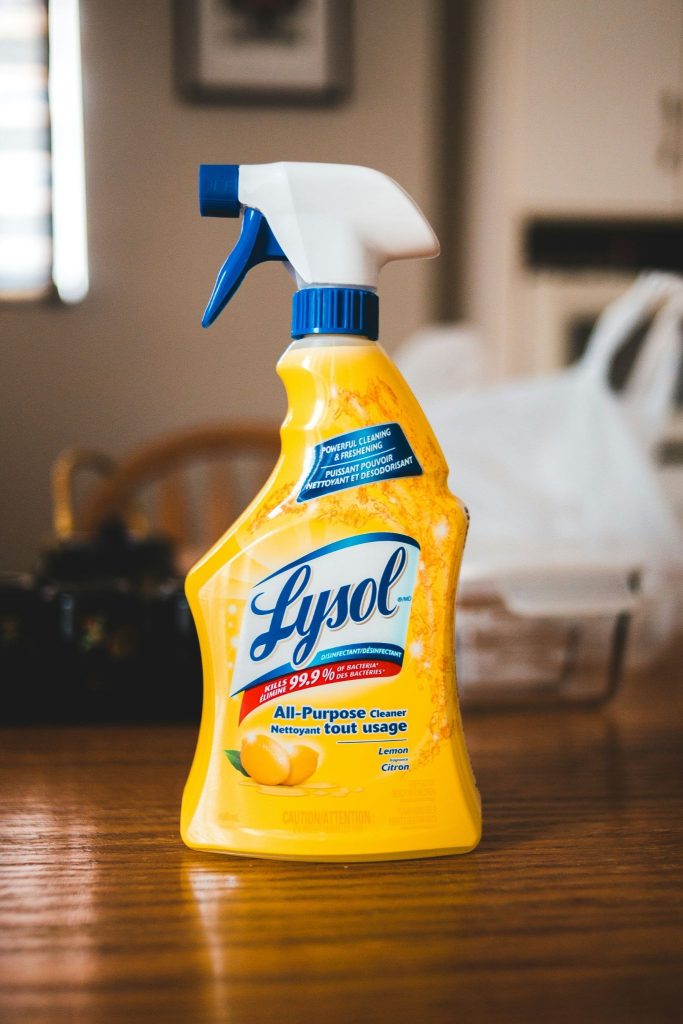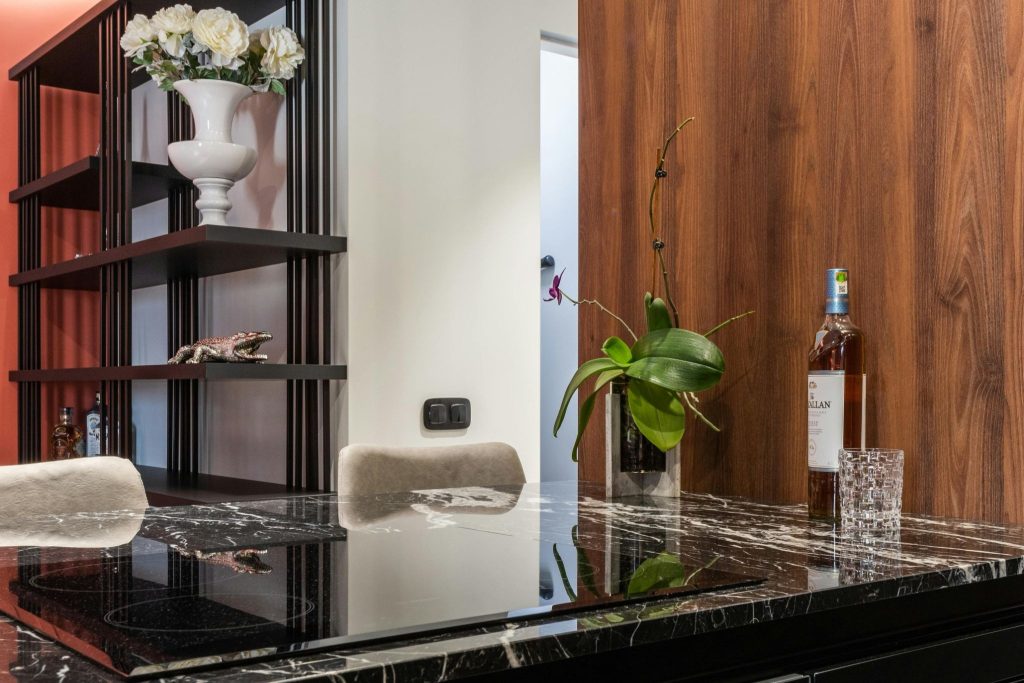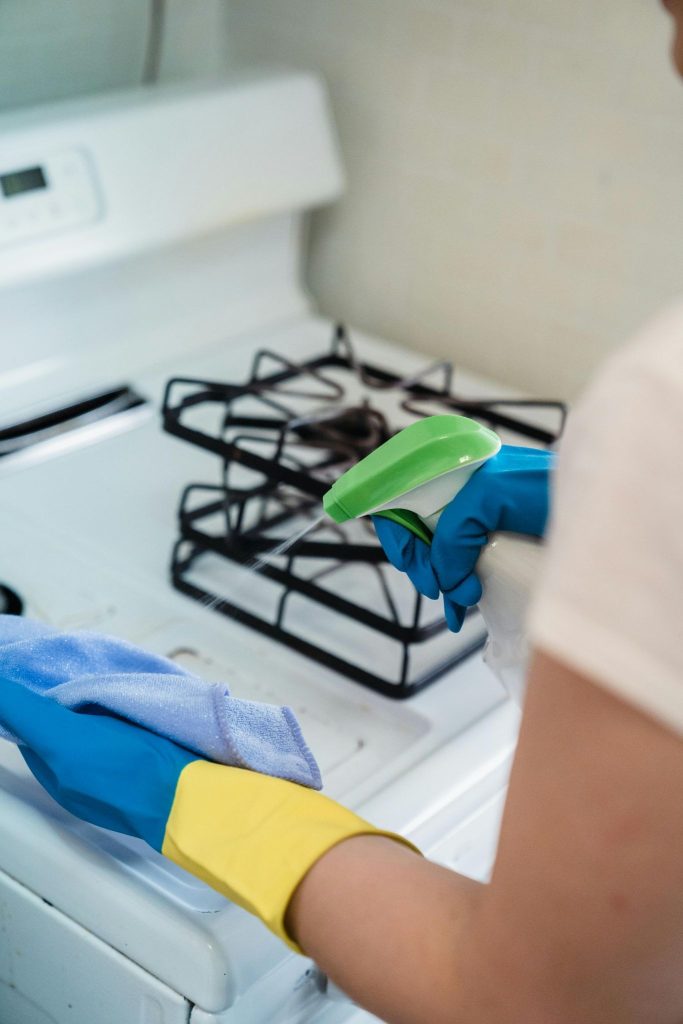
Your smooth glass or ceramic cooktop looks sleek when new—but the moment something burns on, spills over, or mineral deposits build up, it can look dull or scratched.
Choosing the right cleaner for your glass stove top is key to preserving appearance, avoiding damage, and cleaning effectively.
Why this matters
Glass-top stoves (often described as “smooth top,” “ceramic glass,” or “induction compatible”) require more careful cleaning than standard coil or gas-burner stoves. According to cleaning experts:
- Use a non-abrasive cleaner that’s specifically designed for glass/ceramic cooktops; harsh abrasive pads or generic cleaners may scratch or damage the finish.
Because of these factors, investing in a dedicated glass‐stove‐top cleaner (rather than general all-purpose or degreaser) will extend the life and look of your appliance.
What to look for in a good cleaner

Here are factors you should evaluate when selecting a cleaner for your glass stove top:
- Surface compatibility: The cleaner should explicitly state it’s safe for glass, ceramic, or smooth-top cooktops.
- Non-abrasive or micro-abrasive formulation: Avoid coarse scouring pads or steel wool; choose creams, gels, or sprays designed for delicate surfaces.
- Residue-free or easy-rinse formula: You want a clean finish without streaks or film.
- Burn-on particle removal ability: Sometimes spills adhere strongly; a cleaner that includes a scraper or works with one helps.
- Ease of use / maintenance: If it’s easy to apply and wipe, you’re more likely to keep up with maintenance.
- Safety & fumes: Some heavy-duty cleaners can smell strong or release vapours; consider ventilation.
- Packaging & accessories: Some kits include scrapers, micro-fibre cloths, or pads tailored for the job.
- Price vs. value: A premium cleaner may cost more but save you effort and preserve the surface better.
Types of cleaner options
Below are the common types and how they compare.
Top stand-out product style (without listing specific brands by name)
Here’s a generic view of the kinds of product you’ll find:
- Cream/gel cleaner → apply, wait, buff to shine.
- Kit with scraper + cleaner → for heavier use.
- Spray degreaser variant → for lighter duty/maintenance.
- Budget/DIY method → minimal cost.
In the table below we summarise pros & cons of each style to help you decide.
Pros & Cons of Each Style
| Style | Pros | Cons |
| Dedicated glass/ceramic top cleaner | • Specialised for your cooktop material• Often gentle yet effective• Leaves a polished finish | • Cost may be higher than generic• For very heavy burn-on may still need extra tool |
| Kit with scraper/pad + cleaner | • Built-in tools help with stuck-on grime• Good value bundle• Strong performance | • Scraper misuse can scratch• More parts to store/clean• Some effort required |
| Degreaser or all-purpose spray | • Often lower cost• Great for grease and light mess | • May not polish or protect glass surface• Risk of film/residue or scratches if not designed for glass top |
| DIY method (vinegar, baking soda, etc.) | • Very budget friendly• Uses household items• Good for light maintenance | • More labour intensive• May not give as good finish as specialised product• Risk of using wrong tool (e.g., abrasive pad) and damaging surface |
Recommended Usage & Cleaning Process

Here’s a general recommended process for cleaning your glass stove top to get the best results:
- Remove loose debris, crumbs, or burnt bits that are loose. Use a soft cloth.
- Wipe surface with warm soapy water to remove light grease; use a soft microfiber cloth.
- Tackle stuck-on deposits: Use a scraper (if your kit includes one) at low angle, carefully, to lift burnt-on bits.
- Apply your chosen cleaner: If cream or gel, apply a small amount, spread evenly, let it sit if required.
- Buff or scrub lightly with non-abrasive pad or cloth.
- Wipe off residue using a clean damp cloth, then dry thoroughly with microfiber cloth to avoid streaks.
- Optional finishing/shine: Some products include a polish or protective finish; buff as directed.
- Maintain regularly: Wipe down after each use or daily if heavy cooking, weekly deep clean for best results.
Comparison Table: Top Cleaner Product Styles
| Product Style | Key Features | Best For | Approx. Effort/Cost |
| Glass-top Specific Cleaner (cream/gel) | Gentle for glass/ceramic, no heavy abrasion | Routine cleaning, moderate stains | Medium cost, low-moderate effort |
| Cleaning Kit (scraper + pad + cleaner) | All-in-one toolkit for heavy use | Homes with lots of cooking/residue | Higher cost, moderate-higher effort |
| Degreaser Spray (all-purpose) | Quick spray and wipe, good for grease | Light maintenance, budget conscious | Lower cost, low effort |
| DIY Method (vinegar + baking soda) | Household ingredients, minimal cost | Occasional use, budget | Very low cost, higher effort |
Pros & Cons: Best Overall Cleaner (for glass stove top)
Let’s imagine you pick a top dedicated glass-top cleaner kit as your go-to. Here are its general pros & cons:
Pros
- Designed specifically for glass/ceramic cooktops → reduces risk of scratching or damage.
- Often includes pad/scraper tools to handle stuck-on residue.
- Leaves the surface looking polished, clean, streak-free.
- Helps maintain the cooktop’s appearance, potentially extending its life.
- Relatively easy to use once you have a habit down.
Cons
- Higher price than generic all-purpose cleaners.
- Requires purchase of correct pad/scraper and good technique to avoid damage.
- If you ignore maintenance it still won’t prevent major burn-on; good technique is still required.
- Some cleaner formulas may have stronger chemical smells or require ventilation.
- Needs you to wait for a cool surface and spend a little time—so not as “instant” as light wipes.
Top Product Names to Consider
While I won’t deep-dive branded models here (prices and availability vary by region), here are the kinds of product names you’ll see and what to look for:
- A “Glass Cooktop Cleaner & Polish” designed for smooth-top ranges (e.g., includes scraper and pad).
- A “Cooktop Cleaning Kit for Glass & Ceramic” listing safe for induction and radiant surfaces.
- A “Heavy-Duty Glass Top Cleaner” for tougher stains/burn-on.
- A “Degreaser Spray” labelled safe for smooth cooktops (check compatibility!).
- A “Non-abrasive Cream Cleanser for Ceramic Glass Cooktop” among alternatives.
When shopping in Bangladesh (or via international order), check local availability, shipping, and whether the product is marketed for “ceramic/glass smooth top ranges.”
Maintenance Tips & Avoiding Mistakes
- Clean spills quickly (once the surface cools) to prevent burnt-on residue.
- Avoid harsh abrasives such as steel wool, scouring pads, or generic abrasive cleaners—they risk scratching.
- Use the right tool: microfiber cloths, non-scratch pads, or the scraper tool included.
- Keep the surface cool before cleaning. Hot glass may react badly to cleaning chemicals or cause burns.
- Polish lightly if the cleaner includes that step to preserve the shine.
When to Replace or Repair the Surface
If you notice any of the following, you may need professional repair or replacement of your cooktop rather than just cleaning:
- Deep scratches that scatter light or make the surface cloudy.
- Cracks or chips in the glass that compromise integrity.
- Persistent haze or burnt-on finish you cannot remove even with proper cleaner.
As one expert notes: if the surface looks cloudy or scratched around burners, it may need a pro or replacement.
Frequently Asked Questions (FAQ)
Q: Can I use a generic all-purpose cleaner on a glass stove top?
A: While you can do light cleaning, it’s not ideal. Generic cleaners may not be formulated for glass-top surfaces and may leave film, streaks, or even damage the surface over time. A dedicated glass-top cleaner is safer and more effective.
Q: Is a scraper safe to use on a glass cooktop?
A: Yes—but only if used correctly. Many dedicated kits include a razor-style scraper designed for glass-top cooktops. You must use it at a low angle, with the surface cool, and follow the manufacturer’s instructions to avoid scratching.
Q: How often should I deep-clean my glass stove top?
A: For frequent cooking, a light wipe after each use is ideal. A deeper clean (with dedicated cleaner, treatment of burnt-on spots) once a week or bi-weekly is a good routine. Maintenance prevents buildup and preserves finish.
Q: What if the burner ring is discoloured or stained?
A: Often, burner rings or drip areas show discolouration. Use the dedicated cleaner and scraper gently. If the stain is deep and the surface is scratched or etched, it may require professional polishing or replacement.
Q: Will hard water or mineral deposits damage the glass cooktop?
A: Over time, yes. Mineral deposits from spills can leave spots or haze. Using a non-abrasive cleaner and wiping thoroughly helps prevent this. In some cases, a mild vinegar/baking soda pre-treatment can help lighten mineral marks.
Q: Can I use a vinegar-and-baking-soda DIY method exclusively?
A: You can for light maintenance, but DIY methods may not give the same shine or protection as products designed for glass cooktops. They also require more time and elbow grease. And care must be taken that the method and tools don’t scratch the surface.
Q: My glass stovetop has scratches. Can a cleaner fix them?
A: Unfortunately not. Cleaners remove residue and restore shine, but they cannot fix physical scratches or etches in the glass surface. For those you may need a professional repair or consider replacement.
Final Thoughts
Selecting the right cleaner for your glass stove top is a smart investment in your appliance’s longevity and appearance. By choosing a dedicated glass-top compatible cleaner (especially one with tools for tougher bake-on spills), following proper cleaning technique, and avoiding mistakes (like using abrasive pads or harsh generic cleaners), you’ll keep your stove looking great and functioning well.
